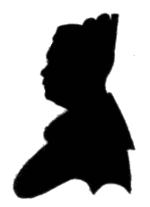Chiefess Kapiolani
| Kapiʻolani | |
|---|---|
| High Chiefess of Ka'ū and South Kona | |

Silhouette by Persis Goodale Thurston Taylor, 1839
|
|
| Born | c. 1781 Hilo, Hawaii |
| Died | May 5, 1841 Honolulu |
| Spouse |
High Chief Naihe (others?) |
| Father | Keawemauhili, Aliʻi Nui of Hilo |
| Mother | High Chiefess Kekikipaʻa |
| Chiefess Kapiʻolani Elementary School | |
|---|---|
| Location | |
|
966 Kilauea Avenue Hilo, Hawaiʻi 96720 |
|
| Coordinates | 19°42′48″N 155°4′41″W / 19.71333°N 155.07806°W |
| Information | |
| Type | Public |
| Grades | K–6 |
| Number of students | 402 |
| Campus type | Outdoor |
| Athletics conference | Big Island Interscholastic Federation |
| Accreditation | Western Association of Schools and Colleges |
| Affiliation | State of Hawaii |
High Chiefess Kapiʻolani (c. 1781–1841) was an important member of the Hawaiian nobility at the time of the founding of the Kingdom of Hawaii and the arrival of Christian missionaries. One of the first Hawaiians to read and write and sponsor a church, she made a dramatic display of her new faith which made her the subject of a poem by Alfred, Lord Tennyson.
Kapiʻolani was the product of generations of inbreeding within the royalties of all four islands. Every high chief in the Hawaiian Islands was related to her, including Kamehameha I, who was both her second cousin and her third cousin through different relations. Her ancestors included royalty of Kauaʻi, royalty of Maui and the royalty of Hawaiʻi island. The name probably comes from ka pi'o lani meaning "heavenly arch" in the Hawaiian language.
The father of Kapiʻolani was Keawemauhili, who was high chief (Aliʻi Nui) of the district of Hilo on the island of Hawaiʻi. She was probably born there about 1781. Keawemauhili was half-brother to Kalaniʻōpuʻu who was king of the island during the fatal visit of Captain James Cook in 1779. Her mother was his second wife Kekikipaʻa, daughter of Kameʻeiamoku, who had fled with from her first husband Kamehameha I to Hilo in order to marry Keawemauhili. She was a first cousin of Kiwalaʻo, the young king of the island who was killed when Kamehameha I first came to power at the battle of Mokuʻōhai in July 1782.
...
Wikipedia
